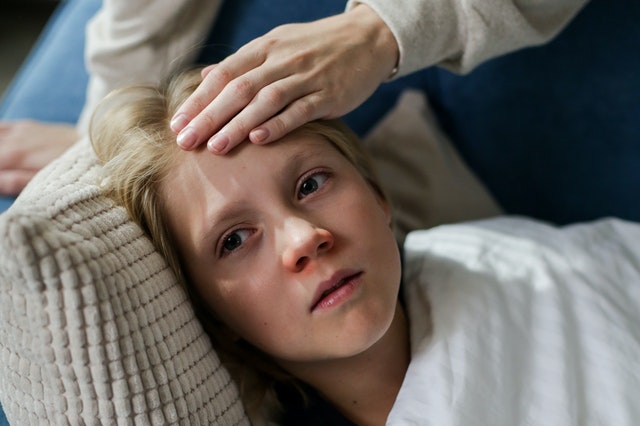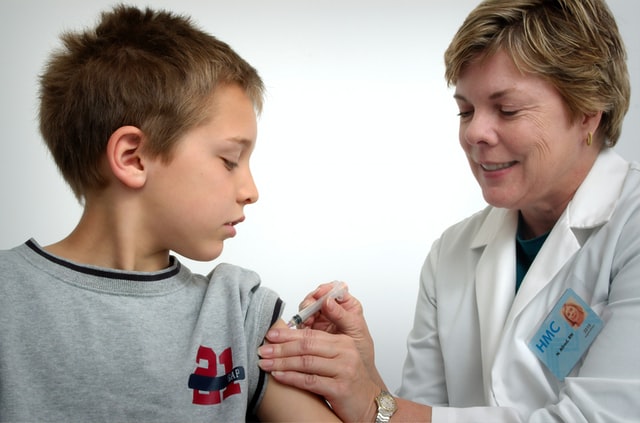Viral Exanthems: The five most common childhood viral skin rashes
One of the most common reasons children fall ill and need to visit the Emergency Department are viral infections. Many of the viral infections seen in childhood are accompanied by skin rashes, contributing to a classic or characteristic morphology and constellation of symptoms. These infections are usually highly infectious in nature and spread quickly between children of similar age groups, sometimes even being transmitted to vulnerable adults.
What are exanthems and eanthems?
When the viral infection causes a rash on the skin, which is externally visible to the naked eye, they are known as “exanthems”. Some viral infections cause a rash inside the oral cavity or other mucosae, these are labelled as “enanthems”.
The five most common childhood viral exanthems, and their classical signs and symptoms are listed below:
- Measles or Rubeola
Measles is a droplet infection, ie it is acquired through oral or nasal droplets from someone who is infected when they cough or sneeze. It is still a serious cause of morbidity and mortality. It is highly contagious and presents with a fever and a rash. The rash typically starts behind the ears and spreads downwards to the trunk and limbs. A child can at times be seriously ill. Lesions are present.
- Rubella or German Measles
A period of fever followed by a development of a pinkish rash, with small red raised areas, usually all over the body. The rash starts on the face and spreads downwards to the trunk and limbs. Usually resolves without complications. The child is most infectious when the rash is developing.
-
Varicella or Chickenpox
Common in children, highly infectious. Fatigue, irritability, fever, cough, runny nose, and ichy rash. There is often a history of contact with other children who had a similar rash in the days preceding the onset. The rash is seen on the face, trunk, under armpits, inside the mouth, etc.
-
Erythema Infectiosum or Fifth disease
This is caused by parvovirus B19 and is common in winter and spring. There is a prodrome of fever, headache, and sore throat, followed by a rash starting on the cheeks. It leads to a bright red “slapped cheek” appearance. After two days the rash spreads to the rest of the body.
-
Roseola or Exanthem Subitum
There is an abrupt onset of high fever followed by a pink rose-like rash developing over the body.
Apart from the above common and classical viral exanthems, there are various other causes of viral exanthems seen in children, some of which include:
- Infectious Mononucleosis
- Rash associated with HIV/AIDS
- Hand-foot-mouth disease
- Dengue Fever
- Pityriasis Rosea rash
If your child develops a fever and then a rash, it is important to note or watch out for the following:
- When did the rash start?
- How is it spreading, over how many days or hours?
- Which body parts are affected?
- Do you think there is a rash inside the mouth or other mucosal regions?
- Is the child feeding and eating okay?
- How is the frequency of passing urine?
- Whether other family members are affected as well?
What should you do to care for your child?
- Keep the baby or child well hydrated
- Isolate from other children, pregnant women
- Avoid sending the child to school or daycare until they recover (this will help prevent transmission to other children)
- Seek advice from your GP and give paracetamol as needed
- Keep a note of the pee count
- Give lots of soft food, fluids, and breastmilk/formula depending on the child’s age
- Soothing emollients can be applied for the skin rash or calamine lotion mixed with liquid paraffin
Should you seek medical advice?
Yes. Some of the viral illnesses can be severe, and it is best to have the child checked with your GP or have a visit to the ED to assess the severity, confirm the diagnosis, and rule out any possible complications. It is also necessary to keep the child well-rested and hydrated for 7-10 days until recovery.
Treatment and Prevention:
Most viral infections are self-resolving and treatment remains symptomatic. Recovery is usually complete and complications do not occur if early treatment is initiated. Vaccines are available for most of these infections including chickenpox, measles, rubella, and taking the vaccinations on time can prevent infections and reduce the severity of illness. In case of severe illnesses in unvaccinated children, complications may occur which might require in-hospital management, especially with illnesses such as measles and chickenpox.
In a nutshell:
- Always be vigilant when a child develops a fever, and do check for the development of any skin rashes
- Over-the-counter paracetamol and cold medication can be given as needed
- Soothing emollients can be applied for the skin rash
- Rest and isolation are most important
- Watch the pee count to check for any signs of dehydration
- Ensure the child is drinking a lot of fluids and eating well
Sources:
- Common Childhood Exanthems – RCEMLearning
- Habif, Thomas P. Clinical dermatology. 5th ed. Mosby Elsevier. 2010.
Image Courtesy:
Ask a Dermatologist
Anonymous, fast and secure!

Dr Aayushi Shah is a practising dermatologist from India, currently based in the UK. She has 5 publications has authored chapters covering a wide range of topics, including chronic urticaria, psoriasis, and skin moisturisers. She also works as a Medical Editor, and enjoys blogging in her free time.



